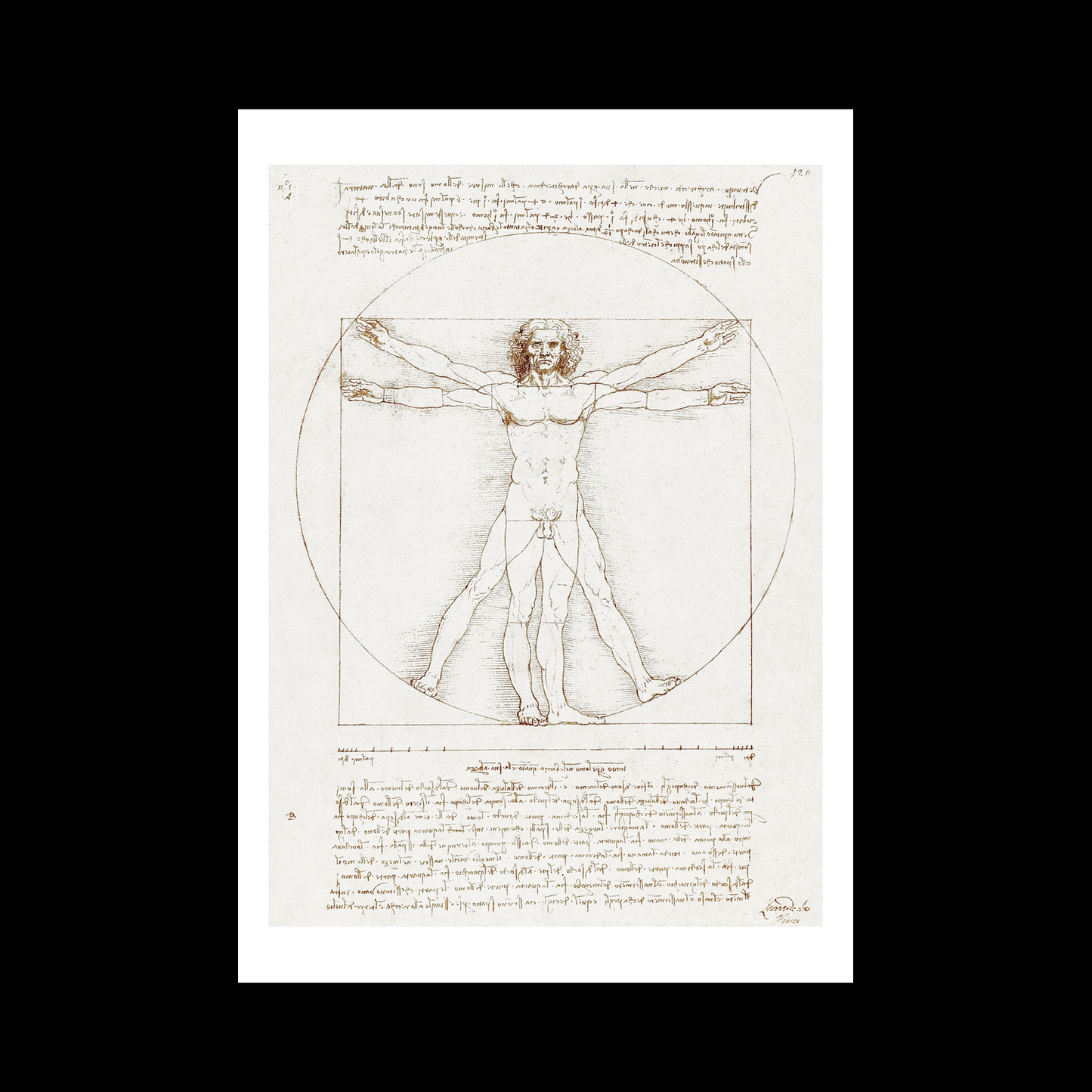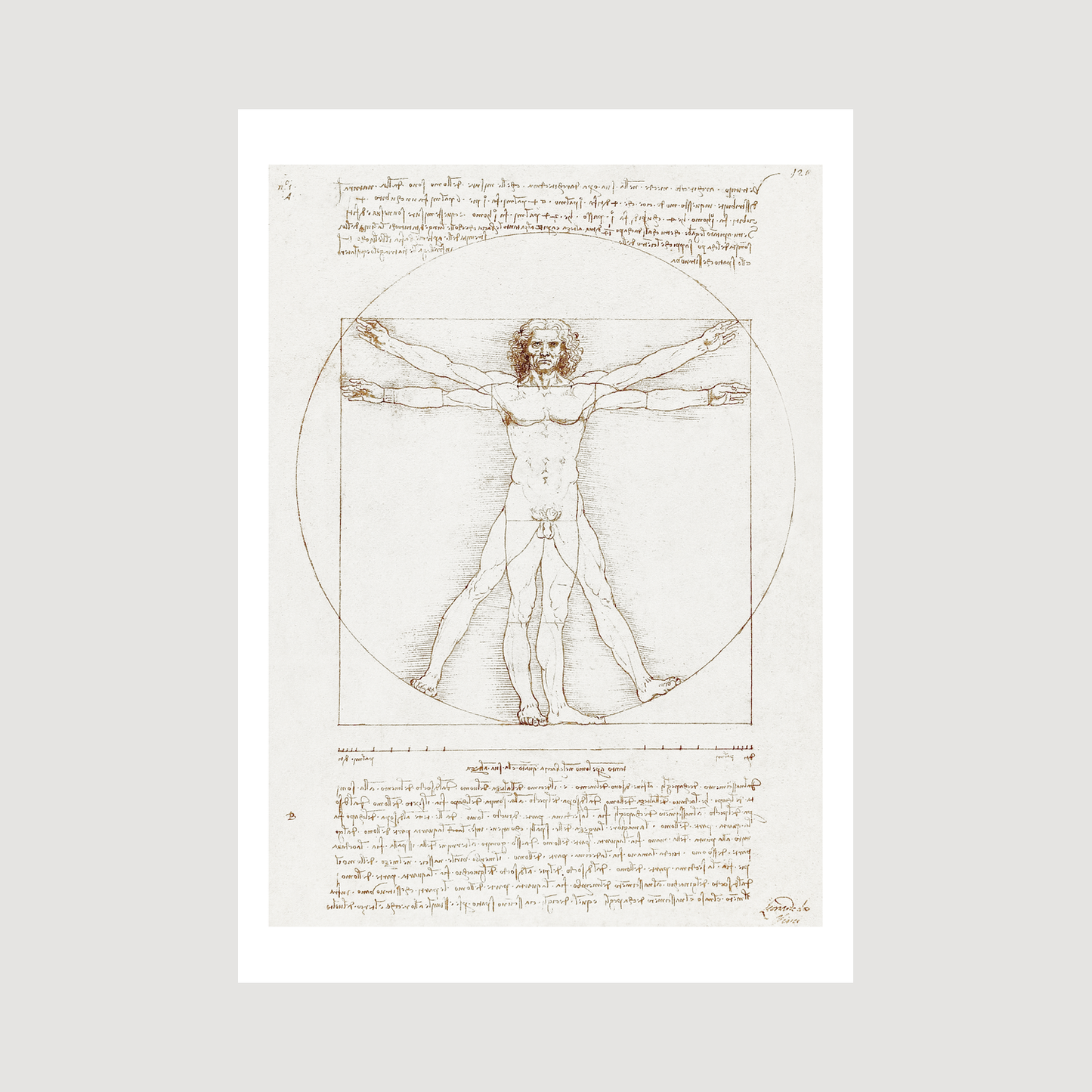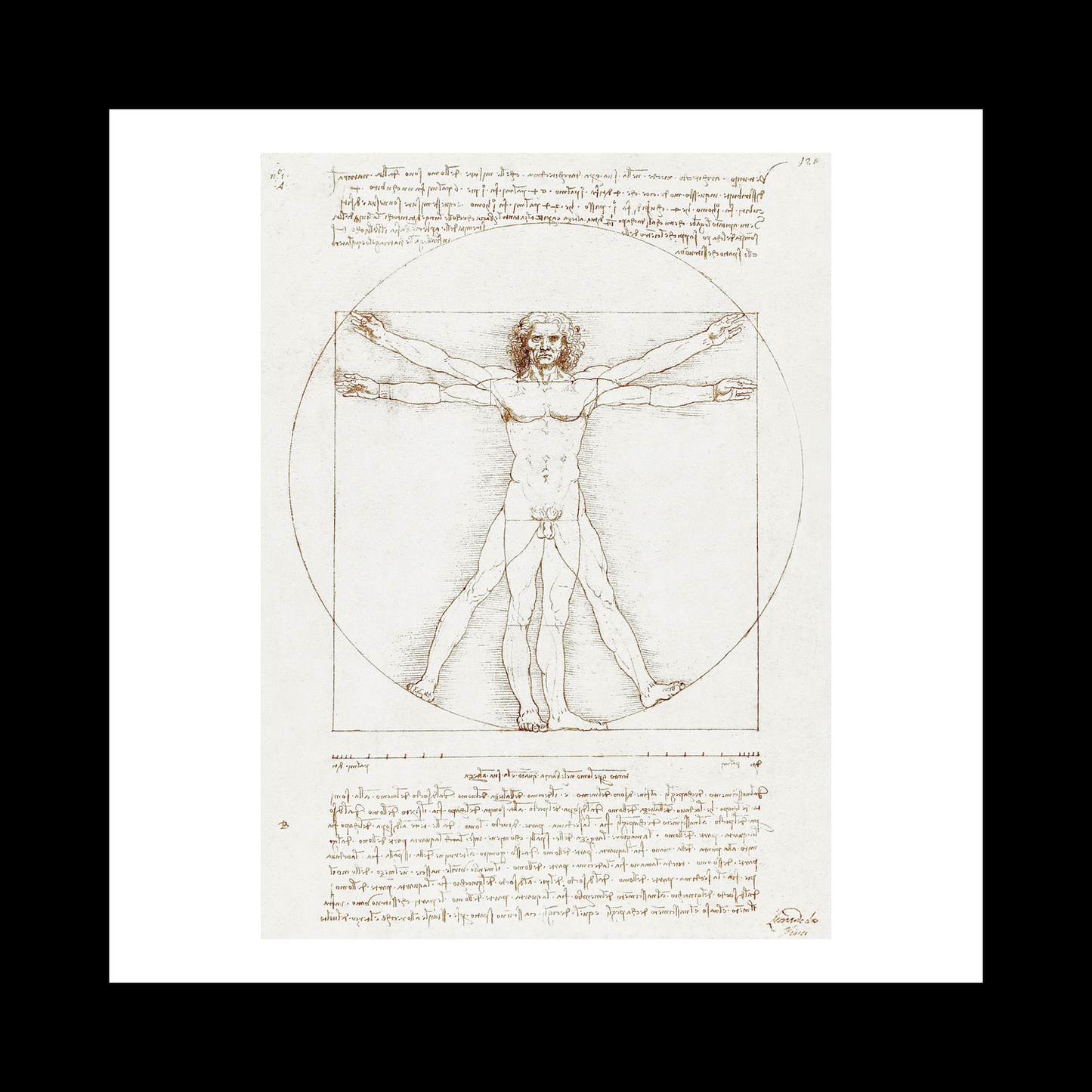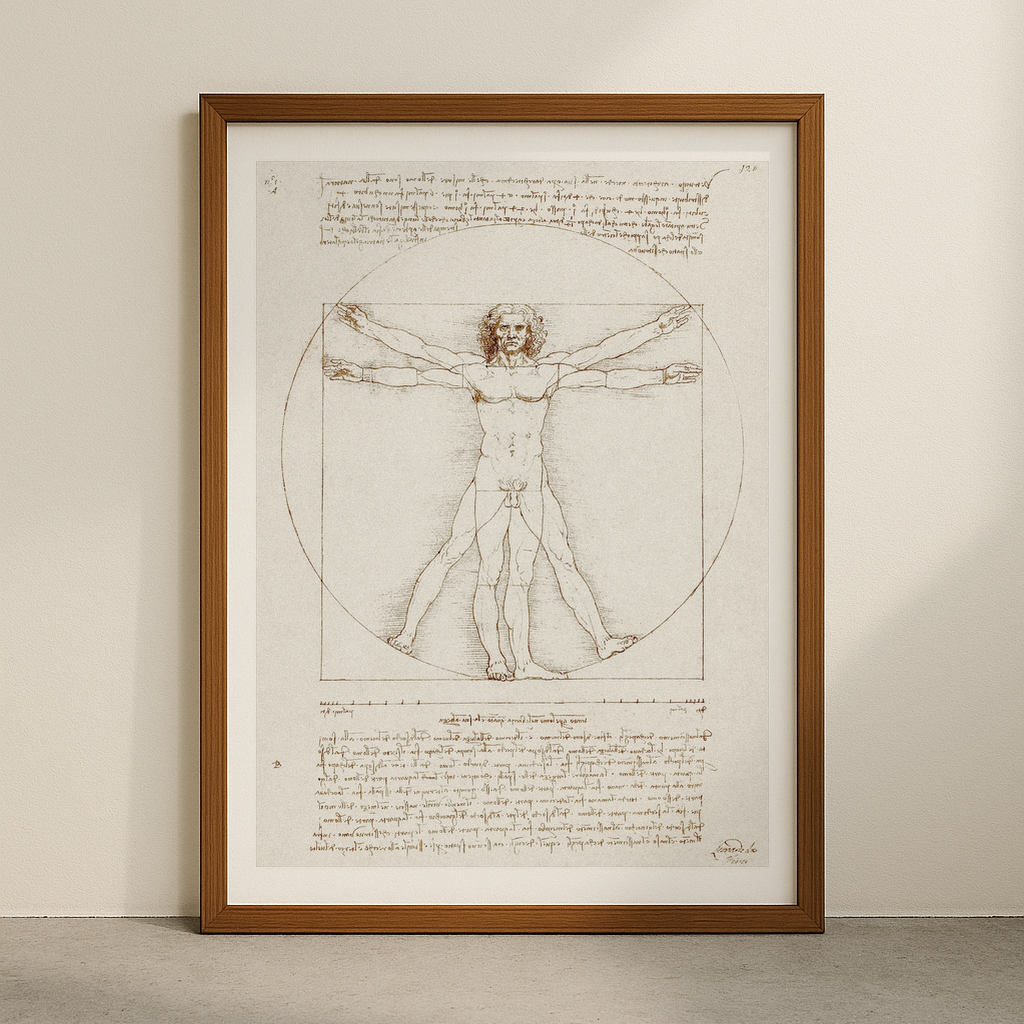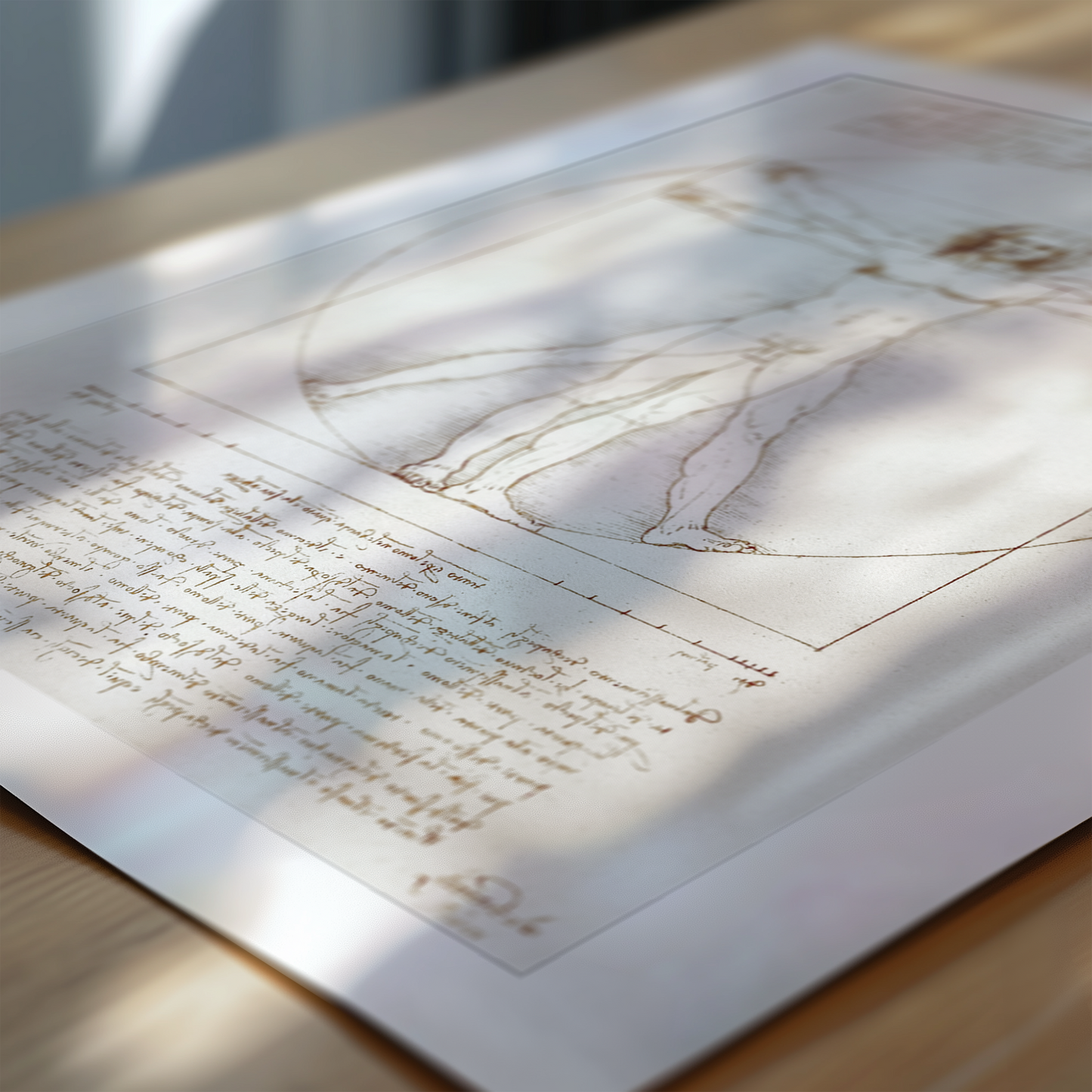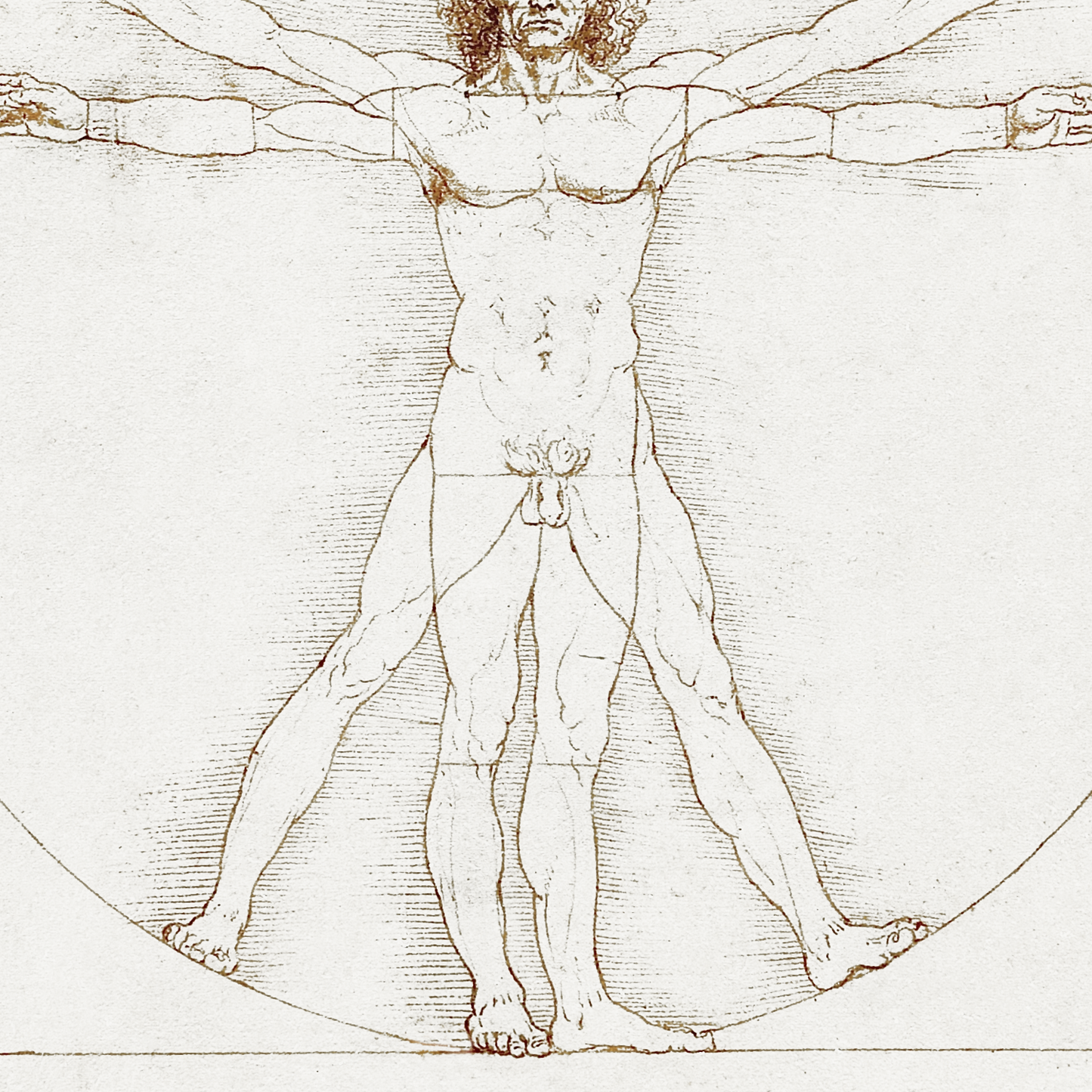1
/
of
6
Vitruvian Man (1492)
Vitruvian Man (1492)
Regular price
£12.45 GBP
Regular price
Sale price
£12.45 GBP
Taxes included.
Quantity
Couldn't load pickup availability
Leonardo da Vinci's Vitruvian Man stands as one of the most compelling illustrations merging art with scientific precision. Created in pen and ink on paper, the drawing depicts a male figure in two superimposed positions: one with arms outstretched in a square, another with limbs extended to touch a circle. The meticulous attention to anatomical detail and mathematical proportions showcases da Vinci's extraordinary observational skills and draftsmanship.
The work embodies the Renaissance ideal of the harmony between human form and the universe. Da Vinci drew inspiration from the ancient Roman architect Vitruvius's writings about perfect proportions, but added his own anatomical insights gained from secret human dissections. The drawing includes mirror writing notes describing precise body proportions, reflecting da Vinci's characteristic left-handed script that he used to protect his research.
Created during his time in Milan, this study exemplifies da Vinci's belief that art and science were inseparable. The drawing represents the intersection of mathematics, anatomy, and classical philosophy - core principles of Renaissance thinking. What makes this work particularly fascinating is how it captures da Vinci's revolutionary approach to understanding human anatomy through direct observation, challenging medieval traditions that relied solely on ancient texts. The perfect balance of artistic beauty and scientific accuracy continues to inspire artists, architects, and scientists today.
View full details
The work embodies the Renaissance ideal of the harmony between human form and the universe. Da Vinci drew inspiration from the ancient Roman architect Vitruvius's writings about perfect proportions, but added his own anatomical insights gained from secret human dissections. The drawing includes mirror writing notes describing precise body proportions, reflecting da Vinci's characteristic left-handed script that he used to protect his research.
Created during his time in Milan, this study exemplifies da Vinci's belief that art and science were inseparable. The drawing represents the intersection of mathematics, anatomy, and classical philosophy - core principles of Renaissance thinking. What makes this work particularly fascinating is how it captures da Vinci's revolutionary approach to understanding human anatomy through direct observation, challenging medieval traditions that relied solely on ancient texts. The perfect balance of artistic beauty and scientific accuracy continues to inspire artists, architects, and scientists today.
